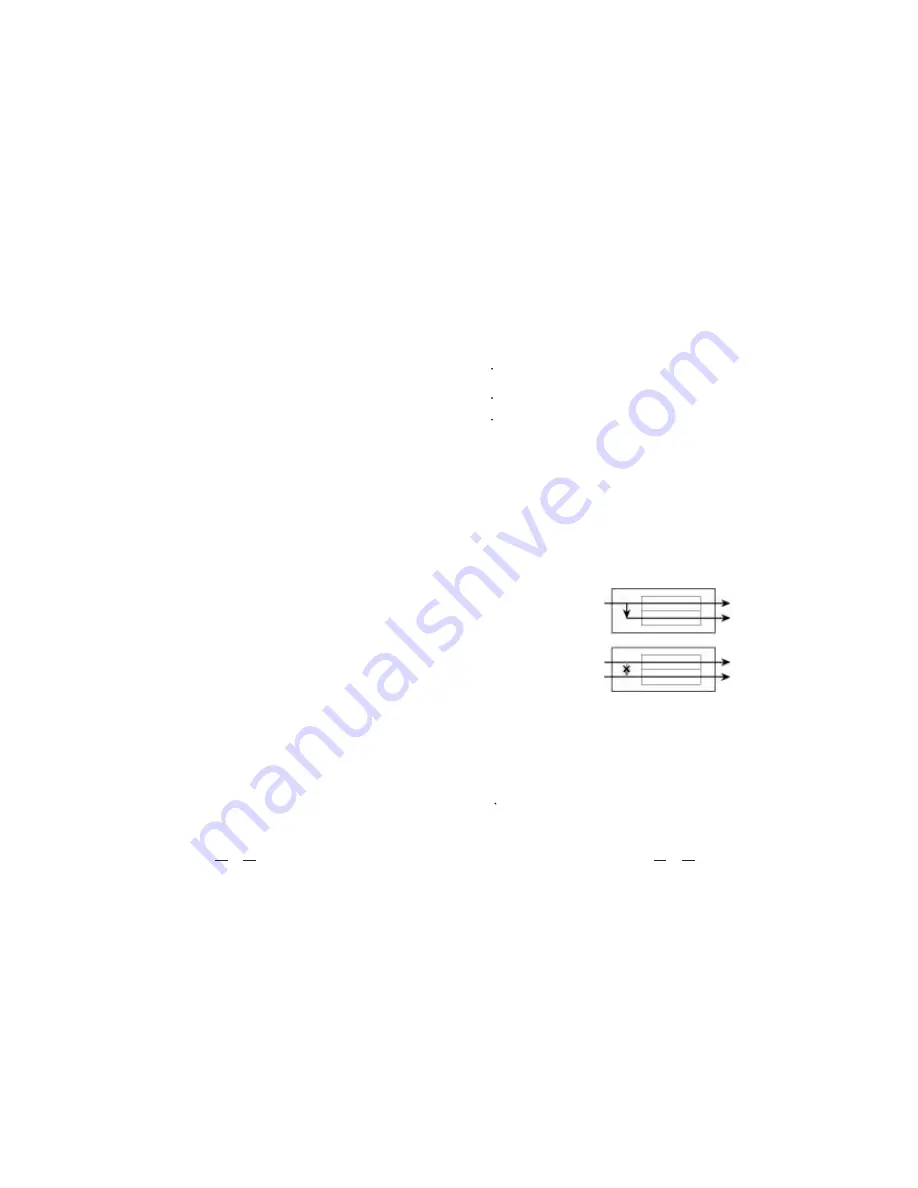
CHAPTER 3
Hall 1
Hall 2
Hall 3
Room 1-
Room 2
Room 3
Plate 1-
Plate 2-
OVERVIEW OF PROGRAMS
Reverb is made up of a large number of distinct echoes, called reflections. In a natural acoustic
space, each reflection's amplitude and brightness decays over time. This decaying action is
influenced by the room size, the location of the sound source in the room, the hardness of the
walls, and many other factors. The DEP offers the following types of reverberation:
This is a simulation of a large concert hall. Halls tend to be large rooms with lots of reflective
surfaces, where sounds can swim around, changing timbre over time. This is a classic reverb
which sounds good on just about anything. Try it on vocals, drums, acoustic, electric, or orchestral
instruments.
- This is a large bright hall program. It works well for almost anything, try it on drums,guitars
or vocals.
- This is a warmer hall program.
It especially adds depth and character to acoustic guitars
and pianos with it's decay set long.
- The third program is a medium hall with 12ms of predelay before the reverb starts.
It sounds great on big rock snares, but try it on vocals and electric guitar too.
This algorithm gives you the sound of a medium size studio room. This algorithm uses a lot of
processing power for a rich sound and smooth decay. It has a punchier, bigger sound than a hall
reverb, which makes it good for rock and dance music. The attack is also more reflective. It sounds
good on drums, keyboards and guitars.
This hardwood studio room has a lot of early reflection slap for big drum sounds.
It also works well for acoustic instruments, especially with the decay turned up.
- This program is perfect for adding a little ambiance to a dry track. Try it on antiseptic
synth sounds or on dry, unplugged mixes with the decay set short.
- Ideal for acoustic guitars and classical instruments, this program emulates a warmer
studio room.
This is a simulation of a classic echo plate, a 4' by 8' suspended sheet of metal with transducers at
either end used to produce reverb. Popular in the 1970's, it is still prized for its transparent sound,
particularly on vocals and guitars. It works well for a lush lead vocal, piano, or guitar, especially
when looking for a classic rock and roll sound.
The first program is a classic bright vocal plate for pristine lead and background vocals.
A warmer variation of the previous program, great for adding sustain on acoustic guitar
and strings.
The reverb decay determines how long the reverb will sound before it dies away. Turning up the
reverb decay will have the effect of increasing the room's size. Generally, classical, jazz, and
ballad styles will use longer decay times than up-tempo rock or dance music.
Reverb Effects
Reverb Parameter Adjust Decay
Decay
Concert Hall (3 Programs)
Real Room (3 Programs)
Plate Reverb (2 Programs)
.
.
.
.
.
.
.
.
.
.
.
.
.
.
.
.
.
.
.
.
.
.
12
The audio inputs and outputs are typically used in one of three ways:
from one or two effect/aux send outputs of a mixer, and out to the effect return inputs of the mixer;
or,
from a line-level instrument (like a guitar or keyboard with either a mono or stereo output),and out
to an amplifier or mixer input; or.
from the stereo buss outputs of a mixer to a mix-down tape machine or amplifier.
When used with a mono source, the DEP is placed between the source and the mixer/amplifier.
Although the source may be mono, both the [LEFT] and [RIGHT] outputs can be connected to the
inputs of a mixer/amplifier if stereo processing effects are desired. If using the effect sends of a
mixer, you have the advantage of sending any of the mixer's input channels to the DEP's
input(s), and have control over the level of each channel being sent.
These applications are outlined and illustrated in detail on the following pages.
The DEP's [LEFT] INPUT jack is normalled to the [RIGHT] INPUT. This means that if you only
connect a single mono cable to the [LEFT] INPUT jack, it will also be routed to the [RIGHT] INPUT.
However, if anything is connected to the [RIGHT] INPUT jack, this normalized connection will be
broken; in this case the [LEFT] INPUT jack will feed only the [LEFT] INPUT, and the [RIGHT] INPUT
jack feeds only the [RIGHT] INPUT. Also, the [RIGHT] INPUT jack is
normalled to the [LEFT]
The DEP has two 1/4" unbalanced inputs and two 1/4" unbalanced outputs.
These provide three different audio hookup options:
Connect a 1/4" phone cord to the [LEFT] INPUT of the DEP from a mono source, and
another 1/4" phone cord from the [LEFT] output of the DEP to an amplification system or
mixer input.
Typical Applications
Input Jack Wiring
NOT
MONO.
Connecting Directly to an Instrument
When connecting audio cables and/or turning power on and off, make sure that all devices in your
.
.
.
.
.
.
.
.
.
.
.
.
LEFT/CH 1
LEFT/CH1
RIGHT/CH 2
Outputs
LEFT/CH 1
RIGHT/CH 2
RIGHT/CH 2
5
system have their volume controls turued down.
LEFT/CH1
Inputs





























